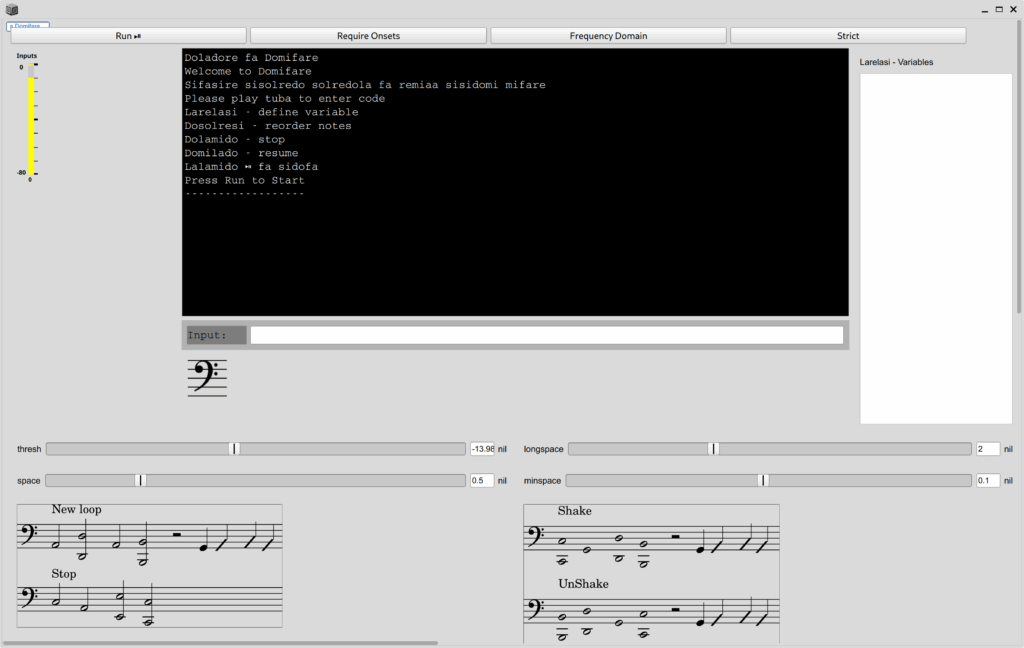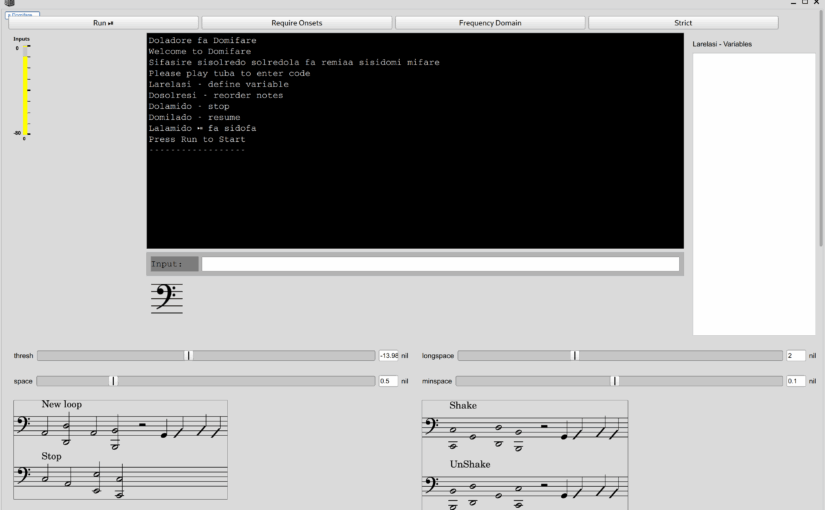
Domifare is back under development because I will be performing with it on Monday evening in London, at Folklore. https://lu.ma/2rkkzmcz
All the improvements thus far have been to the GUI. It’s come a long way, but there are still some persistent bugs: you must resize the window to get the GUI to layout correctly. The new SuperCollider sclang version is a release candidate right now, so I’m holding off fixing everything, as I hope the many conflicting GUI methods will be better harmonised in that version.
The project is relying on BiLETools for several of the widgets because I was having problems with EZSliders. Again, after the major version update, I plan to remove this dependency.
The Key class in TuningLib is no longer required. It was always overkill, and some of it’s functionality has broken in the last three years.
In general, the pitch tracking is working better than it did three years ago, especially the autocorrelation, although there is still a high error rate. The built in “cheat sheet” makes this much easier to use, although I fear it lets the audience in a bit too much on how simplistic this whole setup is.
The notation is all generated via MuseScore, saved as SVG and then edited in Inkscape. The version of SC on my computer won’t open SVG files (or at least not inkscape SVGs), so these are exported to PNG. The lone F clef in the middle of the image adds notes to the right as it recognises them. The language parser does not track octaves, so it displays noteheads inside the lower part of the staff.
Adding the octave tracking is only partially fiddly, but doing this properly would entail turning the new class CleffView into a proper notation layout class. That has obvious utility, but its ore geometry than I want to get into right now.
I may upgrade the variable list from being a BtListView / EZListView to being a stack of ObjectGUIs for the DomifareLoop class. This would be valuable because I could indicate whether they were playing or were shaken. This could also include their name spelled via CleffViews. Or I could just learn to play directly from solfedge.
Another possible future improvement could be the inclusion of Solresol character glyphs, which would have a fun alien vibe. The problems are both that (last I looked) there is not a nice Linux font that supports these and it would require a time investment to be able to play variables names listed that way.
I’ve also misspelled “clef” as “cleff” but a find and replace is giving me crash errors, so idk. Shrug. Sad face. You can see the latest version on GitHub, although this will move to Codeberg hopefully soon.
There’s a very obvious case for integrating Flucoma into this project to recognise gestures. This would also entail building a training interface. The informational webpage for the SuperCollider release candidate specifically mentions that Flucoma does not work with it, so this is also deferred until that gets fixed. I don’t want to have to hold off upgrading SuperCollider, so I cannot create a situation where upgrading breaks this project.
Some of the London live coders (Lu) have expressed enthusiasm for the idea of doing the training as part of the performance. That has president for cybernetic pieces like Hornpipe by Gordon Mumma and remains a very good idea, but still not for Monday.
If this sounds cool and you can’t come on Monday, maybe you could let me know of another gigging opportunity in your town that I could play at? I’d like to take this show on the road!
